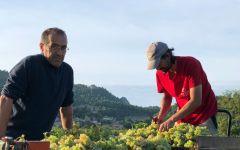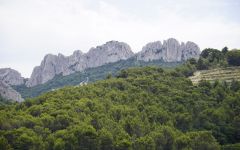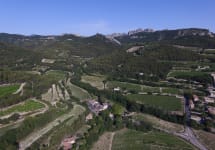Chateau de Saint Cosme Saint-Joseph 2007
-
Robert
Parker


Product Details
Your Rating
Somm Note
Winemaker Notes
"The 2007 St.-Joseph reveals notions of powdered rocks, black cherry and raspberry fruit, and olives. It should drink well for 5-6 years." 89-91 Points
Wine Advocate
April 2009
Professional Ratings
-
Robert Parker's Wine Advocate
The 2007 St.-Joseph reveals notions of powdered rocks, black cherry and raspberry fruit, and olives. It should drink well for 5-6 years. Range: 89-91
Other Vintages
2021-
James
Suckling
-
Wine
Enthusiast -
Wine
Spectator - Vinous
-
Jeb
Dunnuck -
Robert
Parker
-
Wine &
Spirits -
Jeb
Dunnuck -
Wine
Spectator -
Robert
Parker
-
Wine
Spectator -
Wine
Enthusiast -
Jeb
Dunnuck
-
James
Suckling -
Wine
Spectator -
Wine
Enthusiast -
Jeb
Dunnuck -
Robert
Parker
-
James
Suckling -
Robert
Parker -
Jeb
Dunnuck
-
Robert
Parker -
Wine &
Spirits -
James
Suckling
-
Wine
Spectator
-
Robert
Parker -
Wine
Spectator
-
Wine
Spectator
-
Robert
Parker -
Wine
Spectator
-
Wine
Spectator -
Robert
Parker
-
Wine
Spectator
-
Wine
Spectator
-
Wine
Spectator -
Robert
Parker
-
Wine &
Spirits -
Wine
Enthusiast
-
Robert
Parker
-
Robert
Parker







Chateau de Saint Cosme is the leading estate of Gigondas and produces the appellation’s benchmark wines. Wine has been produced on the site of Saint Cosme since Roman times, evident by the ancient Gallo-Roman vats carved into the limestone below the chateau. The property has been in the hands of Louis Barruol’s family since 1570. Henri and Claude Barruol took over in 1957 and gradually moved Saint Cosme away from the bulk wine business. Henri was one of the first in the region to work organically beginning in the 1970s. Louis Barruol took over from his father in 1992, making a dramatic shift to quality, adding a négociant arm to the business in 1997, and converting to biodynamics in 2010.

Marked by an unmistakable deep purple hue and savory aromatics, Syrah makes an intense, powerful and often age-worthy red. Native to the Northern Rhône, Syrah achieves its maximum potential in the steep village of Hermitage and plays an important component in the Red Rhône Blends of the south, adding color and structure to Grenache and Mourvèdre. Syrah is the most widely planted grape of Australia and is important in California and Washington. Sommelier Secret—Such a synergy these three create together, the Grenache, Syrah, Mourvedre trio often takes on the shorthand term, “GSM.”

A long and narrow valley producing flavorful red, white, and rosé wines, the Rhône is bisected by the river of the same name and split into two distinct sub-regions—north and south. While a handful of grape varieties span the entire length of the Rhône valley, there are significant differences between the two zones in climate and geography as well as the style and quantity of Rhône wines produced. The Northern Rhône, with its continental climate and steep hillside vineyards, is responsible for a mere 5% or less of the greater region’s total output. The Southern Rhône has a much more Mediterranean climate, the aggressive, chilly Mistral wind and plentiful fragrant wild herbs known collectively as ‘garrigue.’
In the Northern Rhône, the only permitted red variety is Syrah, which in the appellations of St.-Joseph, Crozes-Hermitage, Hermitage, Cornas and Côte-Rôtie, it produces velvety black-fruit driven, savory, peppery red wines often with telltale notes of olive, game and smoke. Full-bodied, perfumed whites are made from Viognier in Condrieu and Château-Grillet, while elsewhere only Marsanne and Roussanne are used, with the former providing body and texture and the latter lending nervy acidity. The wines of the Southern Rhône are typically blends, with the reds often based on Grenache and balanced by Syrah, Mourvèdre, and an assortment of other varieties. All three northern white varieties are used here, as well as Grenache Blanc, Clairette, Bourbelenc and more. The best known sub-regions of the Southern Rhône are the reliable, wallet-friendly Côtes du Rhône and the esteemed Châteauneuf-du-Pape. Others include Gigondas, Vacqueyras and the rosé-only appellation Tavel.
